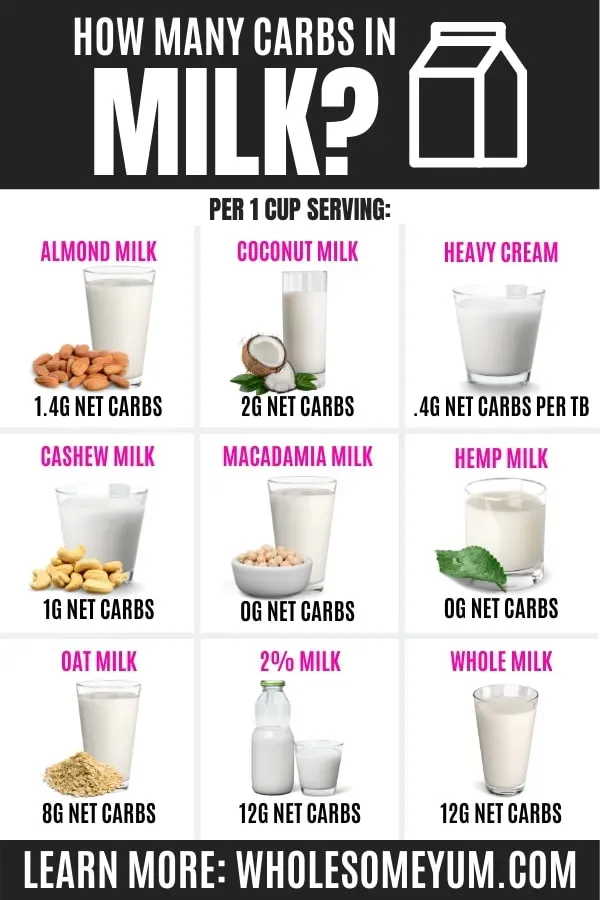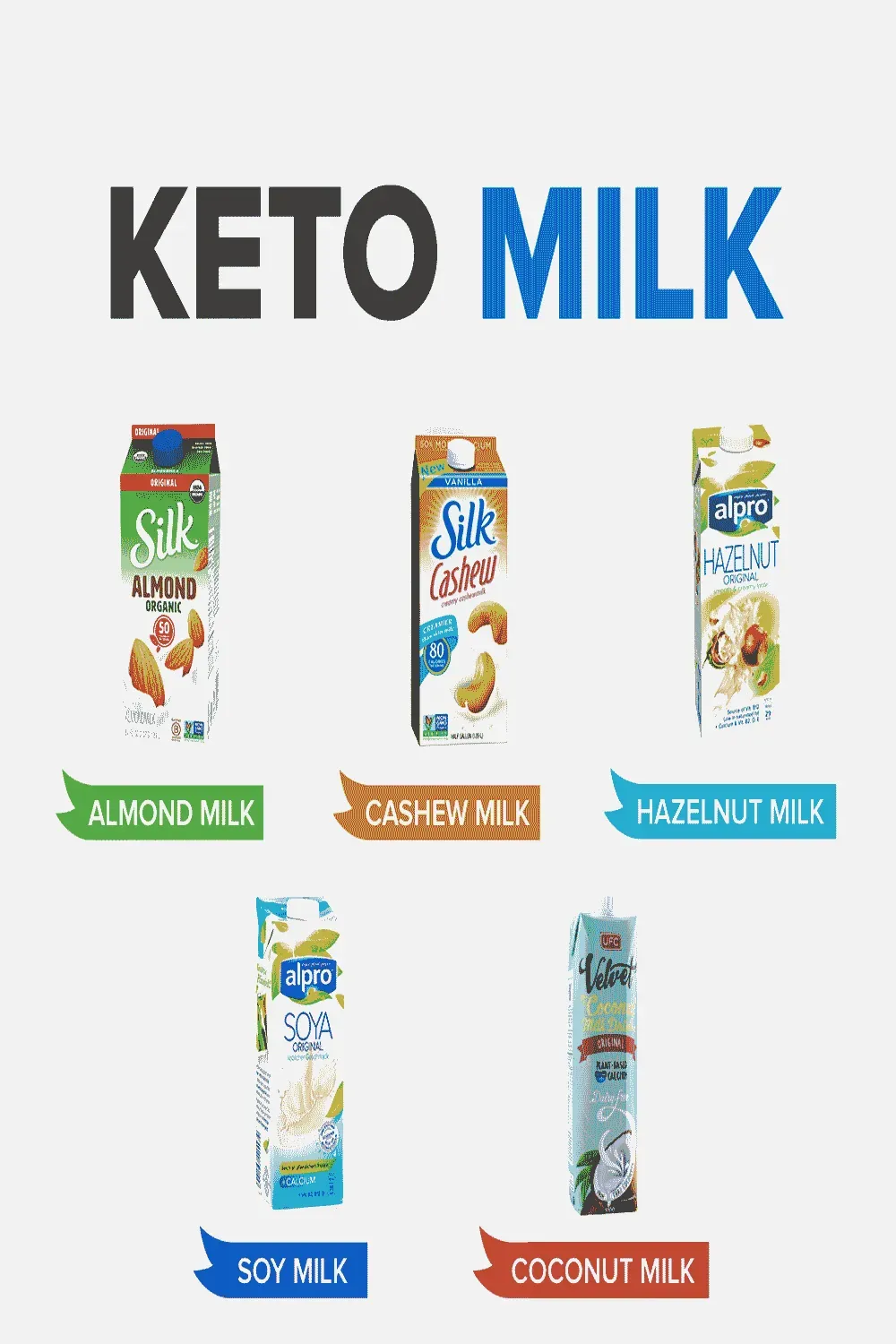Table of Contents
So, you've jumped into the ketogenic diet, cut out the bread, the pasta, the sugary stuff, and you're feeling pretty good. Then you open the fridge and stare at that carton of milk. Can you drink it? Specifically, islow fat milk keto-friendly? It seems simple, right? It's just milk. But for anyone serious about staying in ketosis, dairy can be surprisingly complicated.
Understanding Why Low Fat Milk Keto is a Tricky Combination
Understanding Why Low Fat Milk Keto is a Tricky Combination
The Low Fat Lie (for Keto)
Alright, let's clear the air right off the bat. When you're aiming for ketosis, the biggest hurdle isn't usually fat; it's carbohydrates. And this is where the whole "low fat milk keto" idea gets sideways. We've been told for decades that low fat is the way to go for health, right? So, naturally, you might think low fat milk would be better on any diet, including keto. Wrong.
Reducing the fat in milk doesn't magically remove the sugar. Skim milk, 1%, 2% – they all still contain roughly the same amount of lactose per serving as whole milk. Think of it like this: they took the fat out, but they left the sweet stuff in. And that sweet stuff, lactose, is a carb. A significant one, if you're trying to stay under 20-30 grams of net carbs per day. That glass of 2% milk you're eyeing? It could blow a third or even half of your daily carb budget before you've even had breakfast.
Lactose: The Hidden Keto Killer in Your Milk
The main issue withlow fat milk ketoplans isn't the fat content; it's the sugar content, specifically lactose. Lactose is a disaccharide, a sugar made up of glucose and galactose. When your body digests it, you get glucose. And glucose is the primary thing the ketogenic diet tries to minimize because it spikes insulin and prevents your body from burning fat for fuel (ketosis).
A standard 8-ounce glass of cow's milk, regardless of fat percentage, typically contains around 12 grams of total carbohydrates, almost all of which is lactose. For someone aiming for 20 net carbs a day, that's a massive hit. You might as well have eaten a small cookie. It's not the fat that's the problem here; it's the inherent sugar that makes conventional milk a poor fit for strict keto guidelines.
- An 8oz glass of whole milk has about 12g carbs (mostly lactose).
- An 8oz glass of 2% milk has about 12g carbs (mostly lactose).
- An 8oz glass of skim milk has about 12g carbs (mostly lactose).
- Compare that to an 8oz glass of unsweetened almond milk: typically 1-2g carbs.
- Or heavy cream (1 tbsp): less than 1g carb.
The Carb Count: Why Regular Milk (and Low Fat) Can Derail Keto
The Carb Count: Why Regular Milk (and Low Fat) Can Derail Keto
Milk's Main Problem: Not the Fat, It's the Sugar
Let's get down to brass tacks about why regular cow's milk, including the kind labeledlow fat milk keto-friendly hopes, is generally a no-go. The core issue isn't the fat percentage. It's the natural sugar present – lactose. This sugar is a carbohydrate. On a ketogenic diet, your primary goal is to severely restrict carbohydrate intake, typically to 20-30 grams per day, sometimes a bit higher depending on the individual.
Drinking just one standard glass (8 ounces) of cow's milk, whether it's whole, 2%, 1%, or skim, dumps about 12 grams of carbs into your system. That's a significant chunk of your daily allowance, possibly half or more, gone in a single beverage. It leaves very little room for carbs from other foods throughout the day – things like vegetables, nuts, or seeds, which provide essential nutrients and fiber.
Lactose Load: Blowing Your Daily Carb Budget
Consider your daily carb limit. If you're aiming for 20 grams of net carbs, an 8oz glass of milk immediately consumes 12 of those grams. That's less than 10 grams left for everything else you eat all day. Trying to fitlow fat milk ketointo a strict plan is like trying to fit a square peg in a round hole; it just doesn't work efficiently because of that lactose load.
Many people underestimate just how quickly those carbs add up, especially if they use milk in coffee, tea, or recipes. A splash here, a cup there, and suddenly you've consumed more carbs from milk than you should for an entire day on keto. This carb intake prevents your body from entering or staying in ketosis, the metabolic state where you burn fat for fuel instead of carbs.
Milk Type (8 oz) | Approximate Total Carbs | Keto Friendly? |
|---|---|---|
Whole Cow's Milk | 12g | No |
2% Cow's Milk | 12g | No |
Skim Cow's Milk | 12g | No |
Unsweetened Almond Milk | 1-2g | Yes |
Unsweetened Coconut Milk (Carton) | 1-2g | Yes |
Heavy Cream (1 tbsp) | <1g | Yes (in moderation) |
KetoFriendly Milk Alternatives That Actually Work
KetoFriendly Milk Alternatives That Actually Work
so if traditional cow's milk, even the low-fat stuff, is basically a carb bomb waiting to happen on a keto diet, what are you supposed to pour in your coffee or cereal (if you even eat keto cereal)? Don't despair; the market has caught up, and there are plenty of nut and seed-based milk alternatives that offer a significantly lower carbohydrate profile, making them genuinely keto-friendly. The key is always, *always*, checking the nutrition label, specifically for "unsweetened" varieties, because the sweetened versions are just as bad, if not worse, than cow's milk due to added sugars.
Making Low Fat Milk Keto Work? Tips for Dairy on a Ketogenic Diet
Making Low Fat Milk Keto Work? Tips for Dairy on a Ketogenic Diet
Making Low Fat Milk Keto Work? Tips for Dairy on a Ketogenic Diet
so we've hammered home the point that standard cow's milk, including the low-fat versions, is packed with lactose – a carb you want to avoid on keto. Trying to make "low fat milk keto" happen with the stuff from the dairy aisle is mostly an exercise in frustration and blown carb budgets. But what if you really miss that creamy texture or just can't imagine coffee without a splash of something white? Don't despair entirely. The strategy isn't to force high-lactose milk into your diet; it's to find dairy *forms* or dairy *alternatives* that naturally have few carbs. This means saying goodbye to the gallon of 2% and hello to options like heavy cream or half-and-half, used sparingly, because they have significantly lower carb counts per serving. Or, pivot entirely to unsweetened nut milks like almond or macadamia, which offer that milky feel without the sugar hit. It requires vigilance and label-reading, but a little bit of the right kind of dairy (or dairy stand-in) is possible.
The Final Word on Low Fat Milk Keto
So, there you have it. The simple truth is that chasinglow fat milk ketoisn't the path to ketosis success. The "low fat" part doesn't magically erase the lactose, which is just another name for sugar in this context. Those carbs add up quickly and can easily kick you out of the metabolic state you're working hard to achieve. While giving up your morning latte splash might sting, the good news is the dairy aisle (and beyond) offers plenty of low-carb, high-fat options that actually play nice with keto. Prioritize unsweetened plant-based milks or stick to the higher-fat dairy like heavy cream or half-and-half in moderation. Read those labels, count those net carbs, and make choices that align with your ketogenic goals, rather than clinging to a low-fat habit that doesn't fit the bill.
